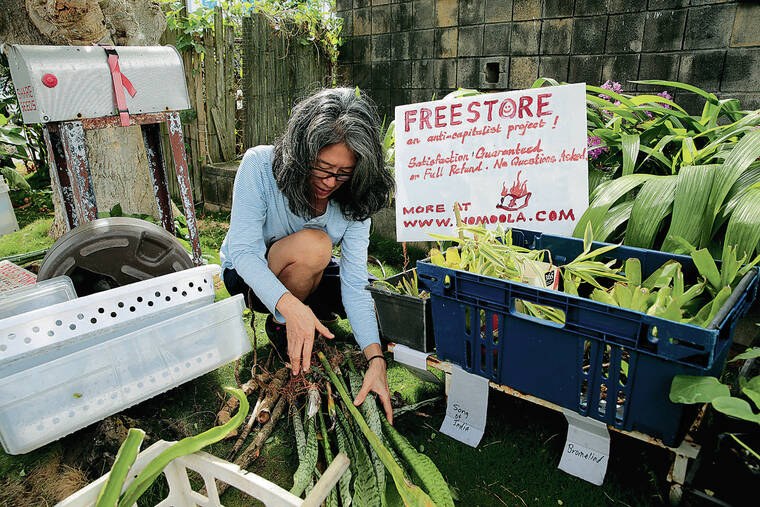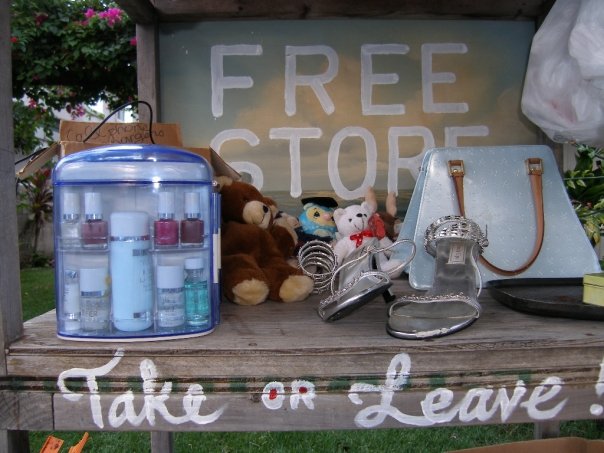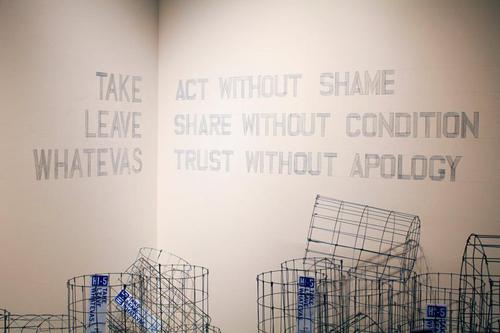Editor’s note: Free stores are one extension of the gift economy. At a free store, all items are available to visitors at no cost, connecting folks who need it with access to goods like clothing, food and supplies.
The Hawai’i Free Store is a project of Eating in Public, a localized collective committed to establishing community infrastructure unreliant on State and capitalist systems. In this helpful guide, they speak on the benefits of creating autonomous systems of exchange and provide practical tips you can use to bring your very own free store to life.
Creating a free store is often a fun (and relatively simple) journey, but for the uninitiated, the process may seem a bit intimidating. We’ve created a step-by-step guide to help make the process easier for you and your community. Keep in mind that the following recommendations are just that. Free stores are rhizomatic, ever-expanding autonomous zones by nature, so best practices for your neck of the woods might differ slightly from ours. And that’s ok!
Step 1: Find a location
The location is an important decision. In some ways it determines whether it will succeed, what will be exchanged, who and how many people will use it.
Factors to consider are traffic flow, weather condition, population, and convenience — particularly yours. Chose a place where you frequent at least every few days in your regular routine. If not your free store may become a burden.

Whether you seek permission from the authorities who has claims over your location is entirely up to you. If you ask they may become confused, upset, and say no. Or they might become interested and become a part of the project. We prefer not asking permission. Because a) it means that the Free Store explicitly refuses to acknowledge the State’s authority over land, public or private; b) because then a true autonomus zone is created.
If you choose this option, be prepared that your free store may be rudely disrupted. If it is, do not be discouraged. It is easy to start another free store. Also in our experience, the ‘disruption’ stage can often result in inspiring exactly the opposite — namely a community of outraged supporters.
In any case, resistance is delicious.
Step 2: Mark the free store zone
Once the location is determined, you will need to somehow define the space of the store. The most obvious is by creating an actual display unit that clearly demarcates the perimeter of your store. It can be an existing piece of furniture or one you bring. A shelf, a table, a cart, a corner of a room, etc.
It is important that your ‘shoppers’ know where your Free Store begins and ends. Claim your anti-capitalism zone in some way. Expand your zone later as needed.
Step 3: Create and post signage
In our experience, clear signage is extremely important. With a clear sign, almost anything can become a free store.

Suggested language for free store sign:
- Free Store: An Anti-Capitalism Project
- Everything Here is Free.
- Take, Leave, Whatever…
Have fun with your signs! Change them often if you can. Delight your shoppers with your wit. Inspire them with the great potential of free exchange.
Step 4: Begin stockpiling the free stuff
It takes a while to get people used to the idea of a free store. (Because we are only exposed to non-free stores.)
Be prepared to be the only one stocking the free store for at least a couple of weeks. You will need to figure out how to get enough free things to last til others contribute.

Some ideas for stockpiling:
- look in trash cans
- clean up your office and home
- tell your friends to clean up their offices and homes
- clean up strangers’ offices and homes
- go to garage sales when they close and offer to take everything they have not been able to sell. Tell them about your free store
Step 5: Open your free store to the public
Now that you’re all stocked up, you’re ready to go! Before you open your store to public, remember to keep these things in mind:
- Being creative and inventive with your signage will attract more visitors.
- Be patient in the beginning as people learn about (and warm up to) the idea of money-less stores.
- In order to become a sustainable community resource, you’ll need to be observant and respond creatively to the unexpected.

- Defensiveness will push folks away, not lead them in. You want more peeps around, so be friendly, informative and optimistic about the impact your free store will have in your community.
- Don’t try to control everything. Spoiler alert: You can’t.
- Trust life, trust the process, trust yourself and your community members.
- Once you get the hang of it, inspire others to set up their own free stores!
Good luck! Send us a photo of your new free store and we may post it on the website.
This guide was originally published in a March 2013 Shareable article, and has been updated in August of 2022.









